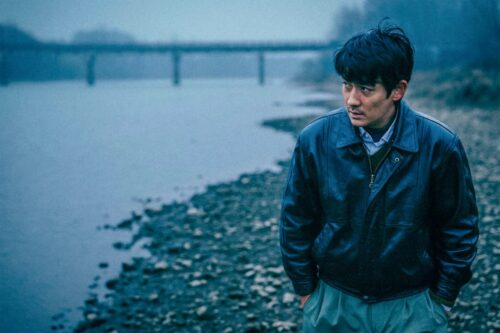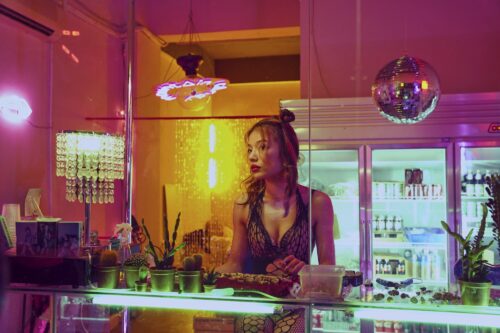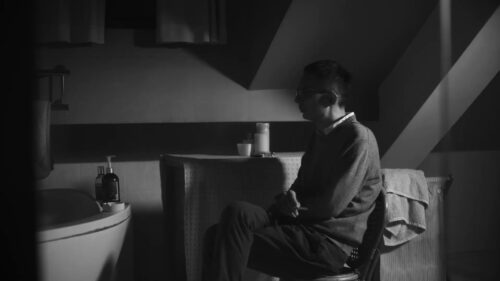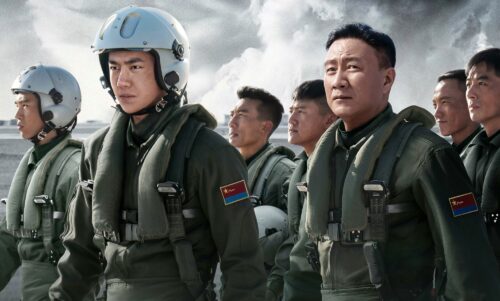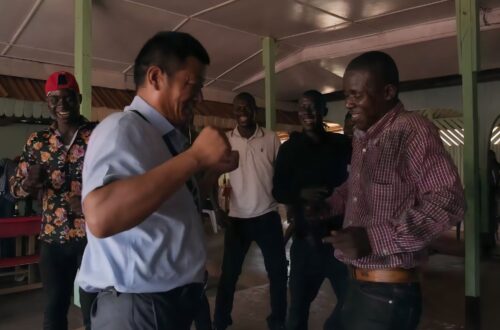‘Mr. Vampire’: The definitive jiangshi movie
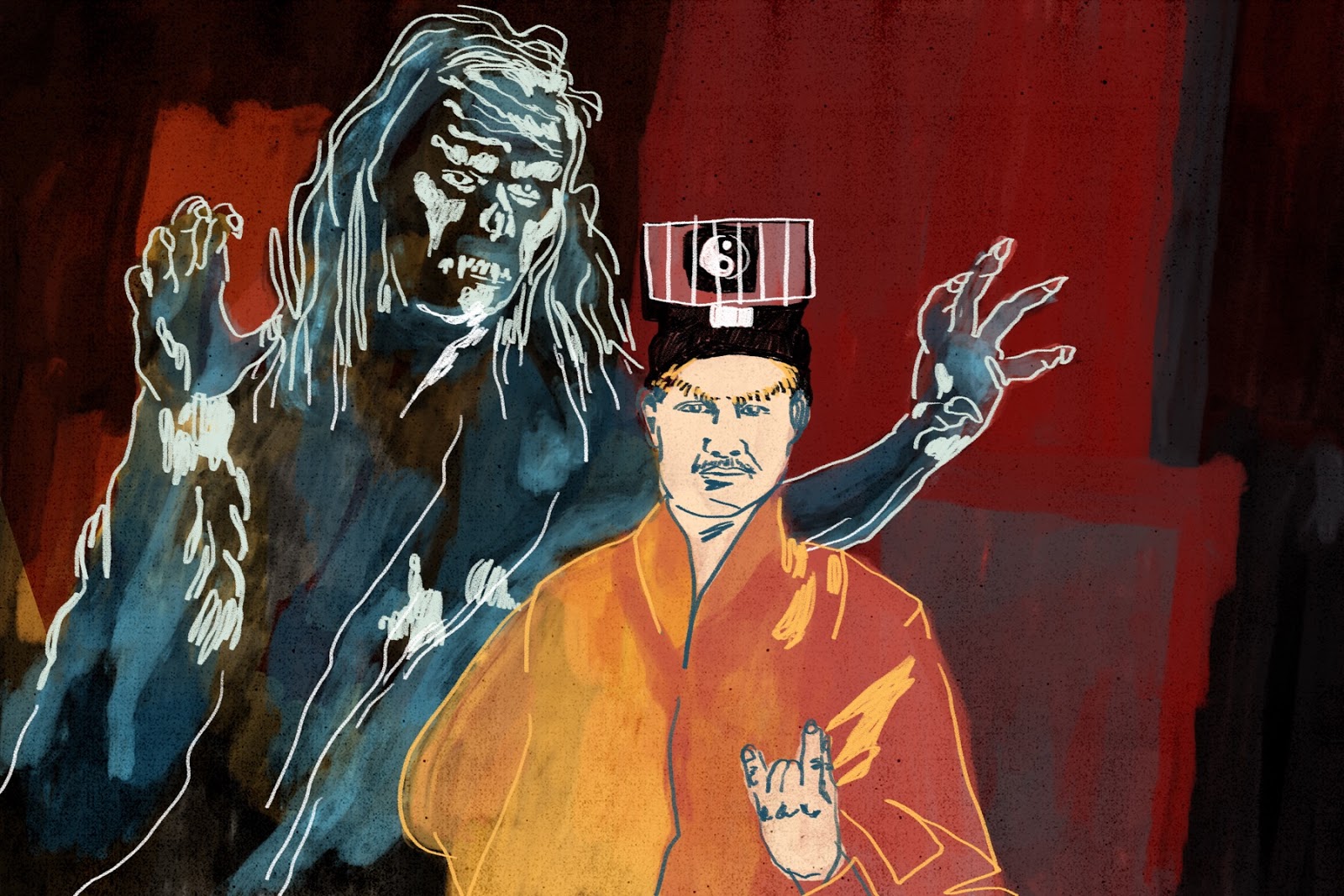
To wrap up our series on Chinese horror, we turn to the jiangshi, that most quintessential of Chinese monsters. Part-vampire, part-zombie, the jiangshi get their day in the 1985 Sammo Hung movie Mr. Vampire, which sparked a horde of imitators but ultimately proved inimitable.
Illustration by Anna Vignet

With its pale skin, old-fashioned robe, and outstretched arms, the jiāngshī 僵尸 is arguably the most recognizable monster to come out of China. While often likened to a vampire or zombie in the English-speaking world, the jiangshi is a relatively unique revenant. It doesn’t suck blood, for example, but prefers to feed on the life force of human beings. Its characteristic hopping is the result of the corpse’s limited, stiff limbs, and its archaic clothes and occasional queue are remnants from the Qing Dynasty. Unlike vampires, who spread their kind by biting, jiangshi were traditionally the result of a corpse being possessed, magically resurrected, or reanimated due to negative energy.
Literally, the word jiangshi means “stiff corpse,” and accounts of reanimated cadavers can be traced back to Pú Sōnglíng 蒲松龄, Jì Yún 纪昀, and other fantastical writers who lived during the Qing Dynasty. But while the “stiff corpse” has appeared in Chinese folklore and literature for hundreds of years, the modern jiangshi we recognize from movies is a more recent design. In the grand scheme of Chinese horror films, the jiangshi had a minimal presence until the 1980s. For the longest time, when a movie used the word “jiangshi,” the monster in reference was likely a ghoul or European vampire. This blurring has made the task of tracing jiangshi movies a tricky business, but at the least, we can credit Midnight Vampire (午夜僵尸 wǔyè jiāngshī) (1936) as the first based on its name.
Possibly influenced by Universal’s famous monster flicks, Midnight Vampire was a revenge tale about a dead man who comes back to life to kill his brother. Vampires of the Haunted Mansion (鬼屋僵尸 guǐwū jiāngshī) (1939) starred a flock of female vampires terrorizing Hong Kong, while the underground-dwelling monster of Three-Thousand-Year-Old-Vampire (三千年地底僵尸 sānqiānnián dìdǐ jiāngshī) (also 1939) plotted to invade a village with an army of demons. Unfortunately, Midnight Vampire and its ancient brethren are lost films, making their place in the jiangshi movie canon uncertain. Whether they portrayed authentic jiangshi, or Bela Lugosi wannabes, is a mystery.
While these were Hong Kong productions, the mainland’s Dr. Li and the Mummy (李阿毛与僵尸 lǐ ā máo yǔ jiāngshī) (1940) features a doctor investigating the mystery of a recently dead elderly man who slips out of his coffin at night. This jiangshi turns out to be a hoax, but the movie is still interesting for its depiction of the monster, with its familiar Qing uniform and long fingernails. In the post-war era, The Voyage of the Dead (万里行尸 wànlǐ háng shī) (1954) presents a Daoist priest who commands a team of hopping jiangshi through the countryside. Meanwhile, The Living Corpse (尸变屍變 shī biàn shī biàn) (1958) used a jiangshi that had a more earthly explanation. Finally, the Hammer Film-influenced Vengeance of the Vampire (1959) was based on a “true” story about a murdered teacher who rose from the grave to find his killers in a remote village in 1943.
Throughout the 1960s and ’70s, there were other Hong Kong movies about vampires and zombies, including the awkward Hammer and Shaw Brothers crossover The Legend of the 7 Golden Vampires (1974). While it wasn’t exactly a good movie, and the vampires were purely European bloodsuckers, 7 Golden Vampires was important for combining the martial arts and horror genres. Another pair of kung fu-horror hybrids, The Shadow Boxing (茅山僵尸拳 máoshān jiāngshī quán) (1979) and Encounters of the Spooky Kind (鬼打鬼 guǐ dǎ guǐ) (1980) might be considered pioneers in their portrayals of jiangshi. In these movies, the jiangshi are hopping stiff corpses, not rehashes of Hollywood standards. It was this fresh approach, as represented in a fight with a creepy jiangshi in Encounters here, that would launch the greatest jiangshi movie of all-time.
Encounters of the Spooky Kind initiated an industry-wide fad that mixed kung-fu and horror, and director and leading man Sammo Hung (洪金宝 Hóng Jīnbǎo) was eager for a second outing. For a similar project focusing on jiangshi, Hung was inspired by the stories he heard from his mother growing up, along with the Pu Songling tale “The Resuscitated Corpse.” The resulting movie, the landmark Mr. Vampire (僵尸先生 jiāngshī xiānshēng) (1985), was produced by Hung and directed by Ricky Lau (刘观伟 Liú Guānwěi). Made over five months, with shooting in Taiwan and Hong Kong’s New Territories, Mr. Vampire went over its original budget nearly twofold.
The plot of the movie concerns Master Kau, a unibrowed Daoist exorcist who uses his magic to keep jiangshi and other supernatural beings in line. When Kau discovers that a client’s deceased father hasn’t decayed a bit in his coffin, the master suspects the corpse might be a jiangshi. At his house, Kau has the body magically sealed in its coffin, but his students Man-choi and Chau-sang accidentally let the jiangshi escape. Now loose, the jiangshi begins to terrorize the men’s town, striking at its own son first. With the skeptical police suspecting Kau of being the culprit, it’s up to the master and his students to stop the jiangshi from causing any further havoc.
Despite its troubled production, Mr. Vampire made more than enough to cover its bloated budget. Surprisingly enough for a horror-comedy, it was also nominated for 13 awards at the 5th Hong Kong Film Awards, winning the Best Original Film Score category. It’s the action and humor, and the hopping jiangshi, that audiences loved best though. The stoic Master Kau, a straight man to his bumbling students and the menacing monsters around them, proved to be an extremely popular character. While Mr. Vampire didn’t invent the jiangshi movie, it helped to define and establish many of its tropes. Kau and his incompetent students became stock figures, and some of the movie’s other inventions, such as the idea that jiangshi could turn living people into monsters by biting them, found their way into other movies.
Like its predecessor Encounters of the Spooky Kind, Mr. Vampire sparked a horde of imitators. Between 1986 and 1990 alone, 24 different jiangshi movies invaded Hong Kong theaters. Mr. Vampire itself became a franchise, spawning four sequels and two spin-offs. Although the enthusiasm for jiangshi waned by the mid-’90s, the monster has remained iconic, spreading from Hong Kong film to cartoons, comics, and games from places like America and Japan. While its glory days might be far behind, especially since we’ve only seen a few new jiangshi movies this past decade, the monster is still assuredly hopping around.
Previously:
‘Dangerous Encounters of the First Kind’: Hong Kong as alienated urban hell
Film Friday is The China Project’s film recommendation column. Have a recommendation? Get in touch: editors@thechinaproject.com
